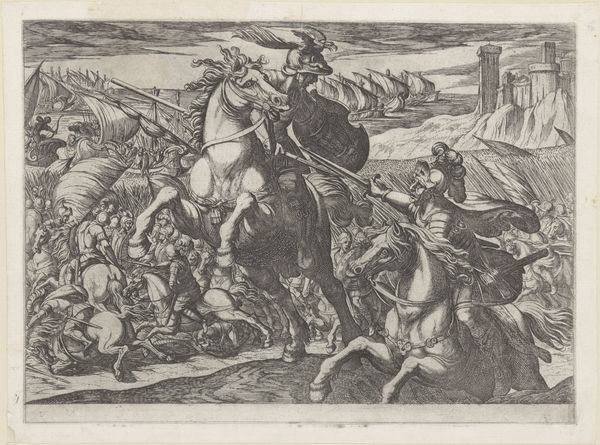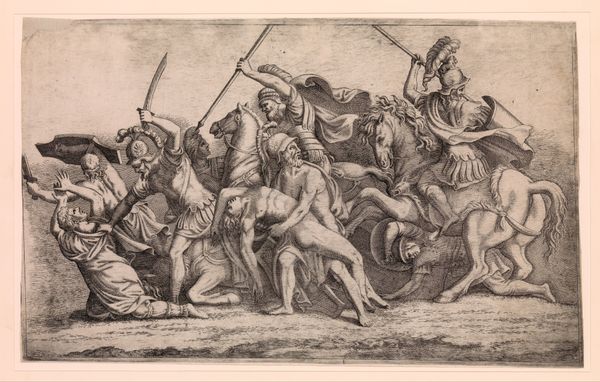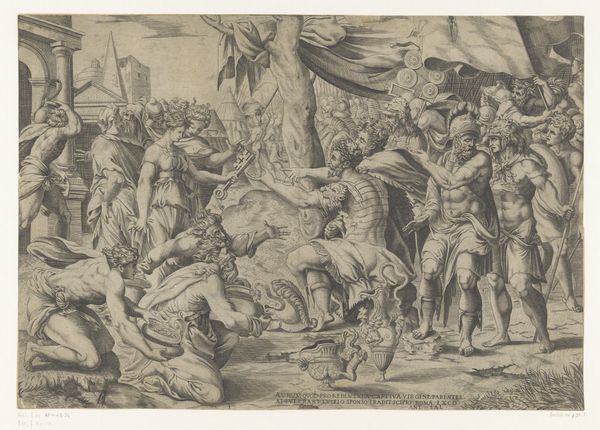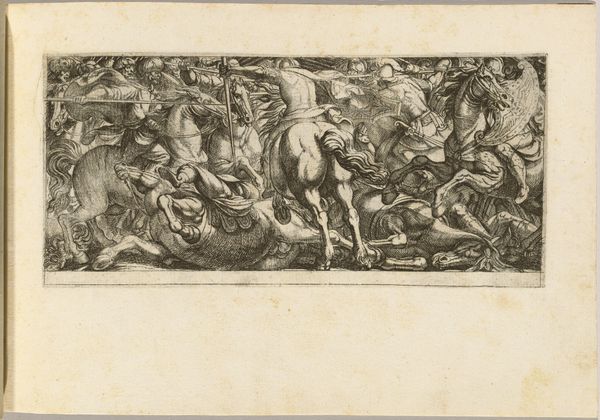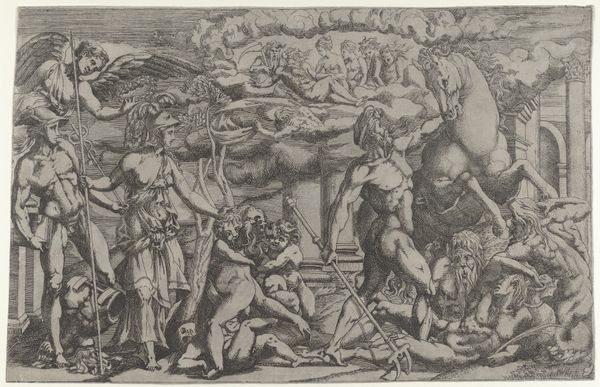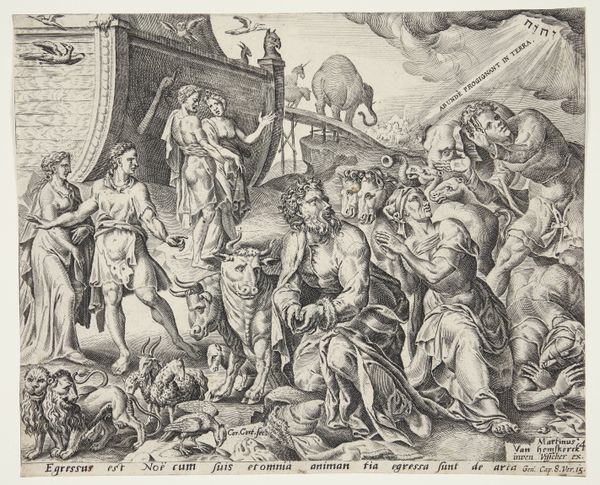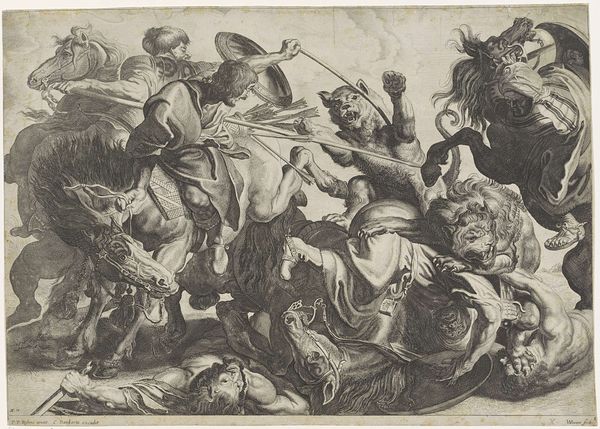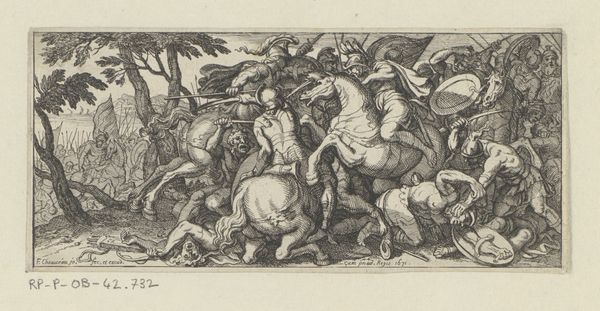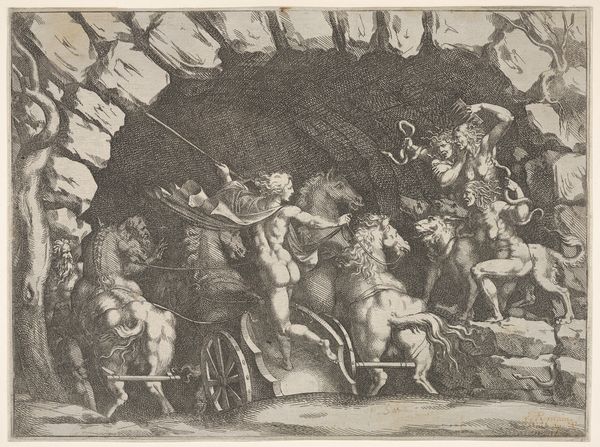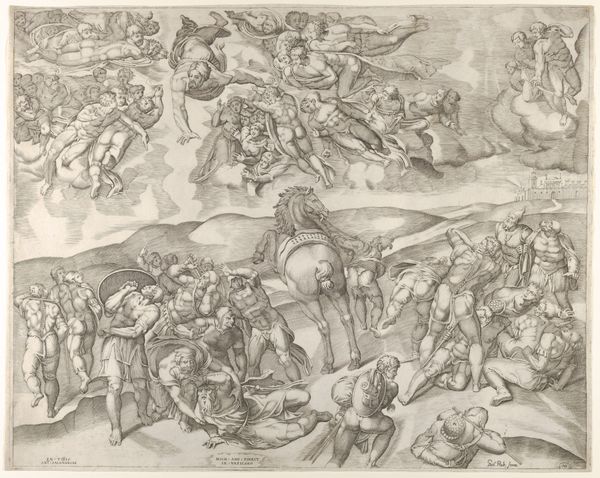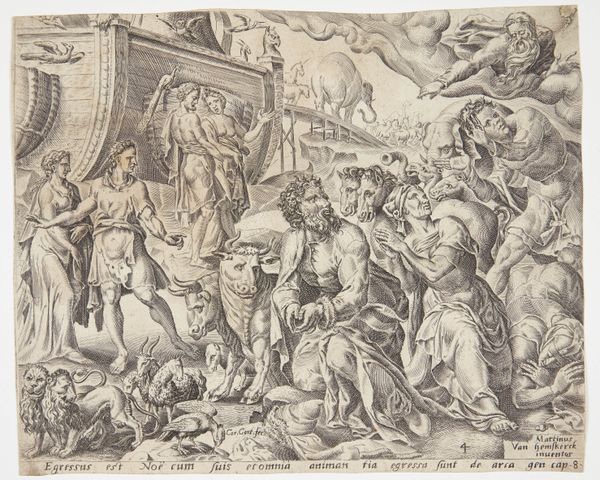
drawing, etching, ink, engraving
#
drawing
#
ink drawing
#
allegory
#
pen drawing
#
pen illustration
#
pen sketch
#
etching
#
mannerism
#
figuration
#
ink
#
line
#
history-painting
#
academic-art
#
engraving
Dimensions: height 123 mm, width 240 mm
Copyright: Rijks Museum: Open Domain
René Boyvin made this print called “Twist between Neptunus and Minerva” sometime in the 16th century. It’s an engraving, meaning that Boyvin used a tool called a burin to carve lines into a copper plate. The plate was then inked and pressed onto paper, transferring the image. The material properties of the copper plate and the precision of the burin allowed for incredibly fine detail. Look at the intricate cross-hatching that creates shading and depth. The act of engraving itself, with its demand for meticulous labor, emphasizes the intellectual character of the work. Prints like these were a crucial means of disseminating images and ideas in the Renaissance. They allowed for the mass production of art, making it more accessible to a wider audience and fueling the growth of a visual culture. Boyvin wasn't just an artist; he was a skilled technician operating within a burgeoning media landscape. So, next time you look at a print, remember to consider not just the image, but the labor and technology that brought it into being.
Comments
No comments
Be the first to comment and join the conversation on the ultimate creative platform.
